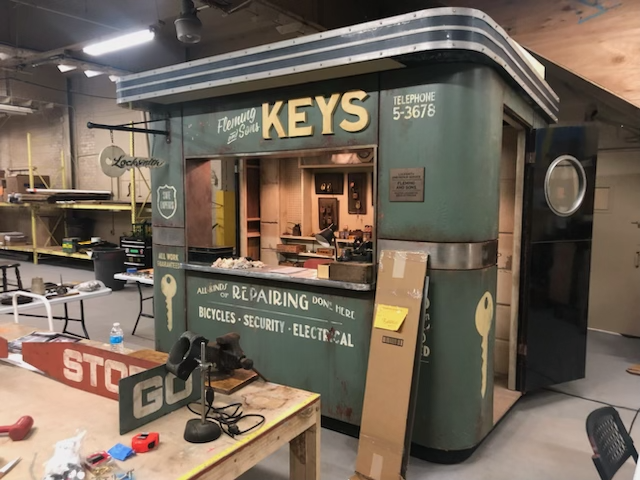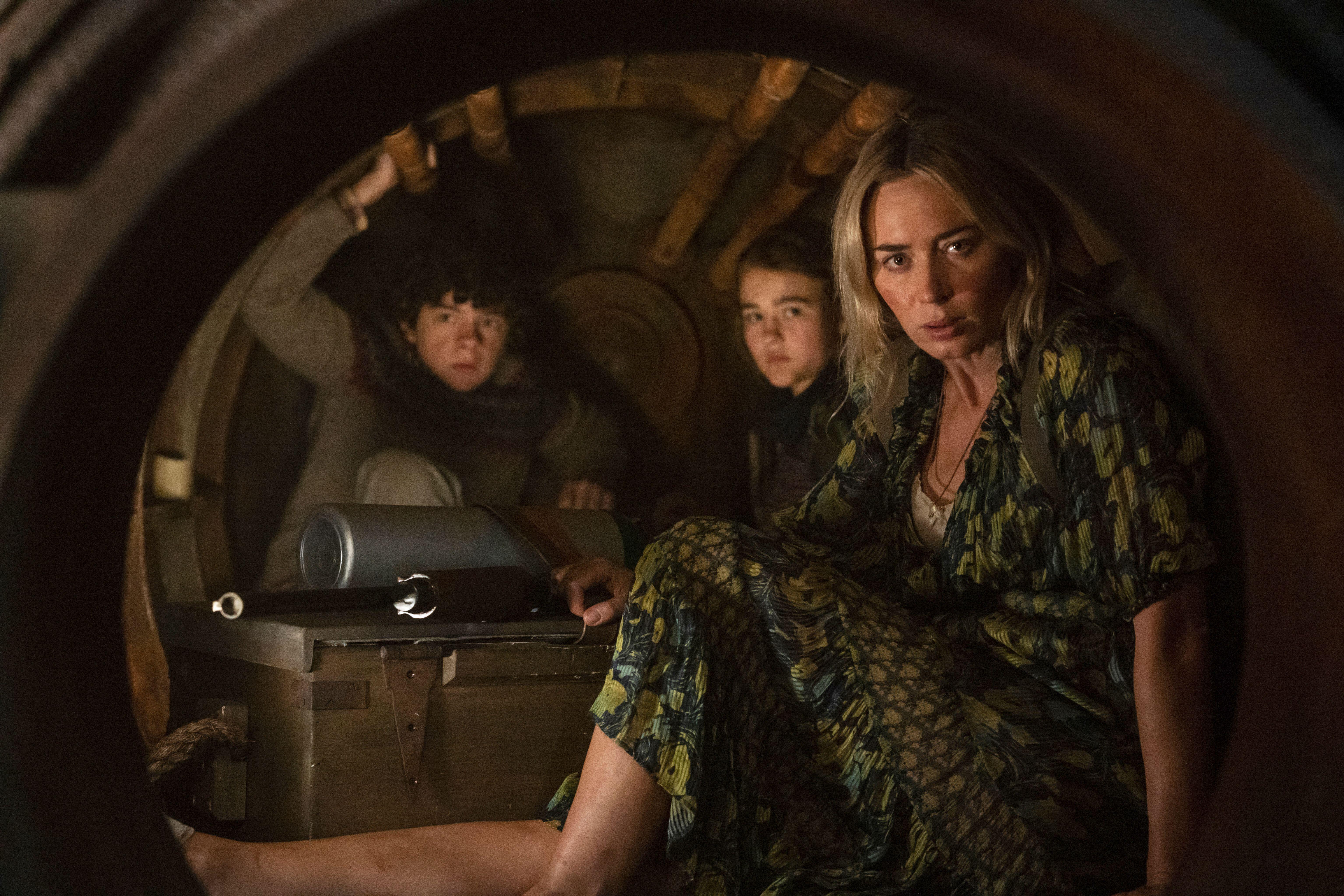The Hollywood of Upstate New York
Photo by The Maker Jess on Unsplash
Back in 2016, Jennifer O’Neill was handling clients’ local and federal tax issues as president of IRS Help. As a side gig, she used her financial expertise to invest in distressed properties in Buffalo, N.Y., where she lived and worked. That’s how she ended up owning an abandoned warehouse on an eight-acre lot in the middle of the city. She bought out the mortgage, cleared the title, and planned to resell the property.
Then Hollywood called.
A burgeoning film industry in Buffalo meant that crews needed somewhere to store gear, sets, and vehicles. O’Neill (’02, Questrom’04) began renting space to them. When the producers of The First Purge, a 2018 horror film, needed to reshoot a scene on short notice, they asked if they could use the property. “Anywhere else, buildings of this size would be soundstages,” O’Neill recalls a crew member saying during production of one of the first films to use space on the lot, The True Adventures of Wolfboy.
After a deal to sell the property fell through, O’Neill and her partners, Kevin Callahan and George Pittas, took a crash course in filmmaking. They researched soundproofing—a soundstage gets its name because it allows filmmakers to record images and sound at the same time—and learned about high-voltage electrical wiring. They gradually converted their warehouse into a 19,200-square-foot soundstage. By 2018, they had established Buffalo Filmworks. They’ve since expanded to four soundstages covering more than 120,000 square feet in four buildings, making them one of the largest studios in Upstate New York.

It was a surprising pivot for O’Neill. “I’d watched movies,” she says, with a laugh. “But I never knew how many people went into making a movie. It’s massive!”
Now she’s an expert. While maintaining her tax business, O’Neill helps producers schedule space, arrange financing, scout locations, and connect with local laborers, hotels, and catering companies. She was an executive producer for the 2022 horror film Bunker. She’s even planned a wrap party. O’Neill is ready to assist with whatever eases a production’s time in Buffalo. Those efforts are paying off, as Hollywood brings more films—and money and jobs—to town.
Why Buffalo?
Converting an abandoned property into a blockbuster-ready film facility was complicated, O’Neill says. But it wasn’t the biggest challenge in growing her new company. That was overcoming Buffalo’s cold weather reputation. O’Neill grew up in the suburb of Marilla, N.Y., and attended the private high school Buffalo Seminary, and she’s not shy about hyping her hometown.
Buffalo offers a cross-section of architectural styles, O’Neill says. Mansions remain from a 19th-century steel manufacturing boom. Grand hotels, early skyscrapers, and important examples of Art Deco dot the skyline. Lake Erie, Niagara Falls, forests, and mountains are all nearby. “Getting around in Buffalo is so much easier than New York City,” she says. “Everything is 15 minutes away.”

As for that snowy reputation? The crew for Nightmare Alley, from Oscar-winning director Guillermo del Toro, probably wished it had been true when they had to make fake snow for a February 2020 shoot.
Del Toro has become one of Buffalo’s biggest cheerleaders in the film community. “It’s effortless to make a period picture there,” he told Yahoo Entertainment in 2021. Nightmare Alley, which was released the same year and received four Academy Award nominations including Best Picture, is a remake of a 1947 noir. Rather than shoot it on a Hollywood lot like the original, del Toro filmed in and around Buffalo and nearby Toronto. Buffalo Filmworks provided space to stage the movie’s vintage cars and for the production team to build period sets, like a newspaper stand and a key shop.
Another reason for Buffalo’s popularity is financial. To entice productions—which spend millions of dollars and hire hundreds of local workers—New York offers a refund on a percentage of the sum spent in the state. To lessen congestion around New York City, that rebate is 10 percent higher for projects based elsewhere in the state.
Those funds are critical, O’Neill says, because producers often rely on loans against the promise of a rebate to get a project started. With her financial background, she’s also well-positioned to help filmmakers navigate the application process. Without those rebates, far fewer films would land in Upstate New York, no matter how attractive the architecture—and lawmakers don’t want to see that happen. The 2024 New York state budget extended the program to 2034 and increased its annual funding from $420 million to $700 million.
Rapid Growth
Despite Hollywood’s work stoppages during the pandemic and the writers’ and actors’ strikes of 2023, Buffalo Filmworks has grown into a full-service studio. Take the work O’Neill’s company performed for A Quiet Place Part II, the 2020 sequel to actor, director, and screenwriter John Krasinski’s 2018 thriller. The film required a wide range of locations: forest, waterfront, train tracks, bridges, and an abandoned steel mill.

Buffalo Filmworks built their second soundstage so crews could construct multiple sets at once. These included a radio station, a flooded basement, and a corn tower. The most complicated set, an industrial furnace in the mill, is central to the plot. It provides a safe space for the Abbott family—played by Emily Blunt, Millicent Simmonds, and Noah Jupe—to hide from the film’s gigantic spider-like monsters, which hunt by sound because they don’t have eyes. Building the furnace set on a soundstage allowed the cinematographer to use dramatic lighting and complex camera movements. The sound team could make the most of their minimal use of noise—A Quiet Place Part II, true to its name, is often a silent film, with whispered lines and soft crunches and rustles building the tension during the most pivotal scenes. It grossed nearly $300 million worldwide and was the first film since the pandemic began to reach $100 million in domestic ticket sales.
Having proven they can host a blockbuster production, Buffalo Filmworks continues to build. Its newest soundstage—the fourth on the lot—is one of the largest in the US. At 77,832 square feet, it stretches the length of two and a half football fields. Onsite camera, electrical, and lighting equipment is available. And O’Neill and her team are building set and prop collections from materials left behind by earlier productions. A cave built for Paranormal Activity: Next of Kin has already appeared in two other films. Next up is completing construction on 20,000 square feet of office space, plus screening rooms and dressing rooms.
A major project can now complete everything from pre- to postproduction at Buffalo Filmworks. That could mean spending half a year or more in the city. According to O’Neill, union membership for local crew members grew from around 10 to more than 300 members when A Quiet Place Part II arrived. The Buffalo Niagara Film Office says that productions spent $70.4 million in the region in 2021; a decade earlier, that figure was $3.1 million.
O’Neill is racing to meet the growing demand, juggling soundstage space for all of the projects arriving in Buffalo. “I’m getting calls every day,” she says.
A Quiet Place Part II remains the largest production to use Buffalo Filmworks, but recent projects have shown off the company’s—and the city’s—ability to handle anything. Filmmakers have used the soundstages to recreate 19th-century New York City for Cabrini, the wilderness of 400 A.D. for The Oath, a World War I battlefield for Bunker, and modern-day Los Angeles for Crown Vic. And, O’Neill says, this is just the start for Buffalo’s film industry. “I think it’s going to explode very soon.”
